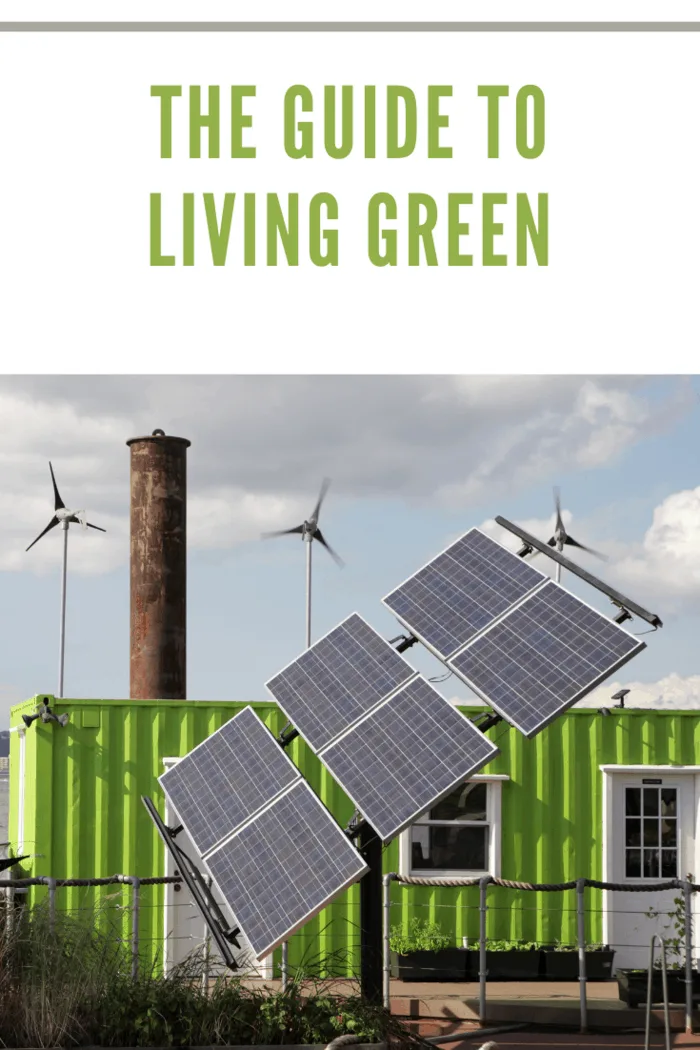Green living is centered around reducing waste, reducing energy usage, and subsequently reducing our overall carbon footprint on the world. Reducing your carbon footprint reduces the negative impact we have on the environment. It also means trying to live in harmony with the natural world instead of destroying it for your convenience. There are many aspects of green living, from reducing consumption to reusing and recycling. But the focus on green living is also applied to the way that you live your life. If you’re searching for ways to appreciate the environment and live green, there are many things you can do to embrace this lifestyle. Here are five ideas that you can incorporate into your lifestyle to embrace green living.
Look at your electric supplier.
Utilities are a frustrating monthly cost for many.
People all over the world try different ways to reduce their electrical usage and lower their utility bills.
There are many green options to explore with electricity, including solar and wind power. Solar power and wind power involve larger initial investments, but they’re both proven to lower overall usage and reduce reliance on the power grid.
Wind and solar are renewable resources that are harnessed without environmental destruction.
According to Penny Hoarder, while solar power is more popular and accessible, both this and wind power can be used to provide power to a home instead of through a traditional energy supplier.
You can also save money by choosing the lowest-priced energy provider in your area.
You’ll see a difference in your electric bill as your electric rates are lower.
You can also reduce your energy usage, which will help to lower your bill. Over time, you can save a lot of money when you compare electricity suppliers to search for the lowest energy provider.
Reducing the amount of money you spend on your electricity will allow you to live a simpler life as your expenses are lower, so your need for income will also be lower.
You may choose to spend those savings in other areas that further promote leading a green lifestyle.

Shop smarter.
Without a plan, driving around from store to store wastes time, energy, and resources.
By learning how to shop smart, you’ll reduce how much you spend.
Too often, when mindlessly shopping, people buy things they don’t need.
A smart shopper will research at home before browsing the stores.
They will look for the best price on the things they want and have those products delivered when it is more feasible and cost-efficient for them.
While opting for delivery may cost a little more, reducing your driving will decrease your carbon footprint.
Even when you go out to get your shopping, doing your research will allow you to choose an environmental option.
It would be best if you chose to support small businesses, products, and companies that protect the environment.
Many of these green companies work to reduce their impact on the environment.
Many companies with a cause utilize their products to help the environment and encourage green living.
So, when shopping, opt for eco-conscious and green companies that operate with the environment in mind.
Eliminate one-time-use products.
Over recent decades, developed countries have become obsessed with one-time-use products.
As the name suggests, these products are used once and then thrown in the trash.
They include paper plates, plasticware, napkins, towels, dryer sheets, coffee pods, filters, and plastic wrap.
While these products are easy to use and reduce the amount of cleaning you need afterward, they’re hard on the environment and cause an increase in landfills.
Each product has an alternative option that is not for one-time use. For example, you can use cloth towels and napkins instead of paper napkins and paper towels.
You can use storage containers in place of plastic wrap and plastic bags and natural dryer balls in place of dryer sheets or liquid fabric softeners.
While some may argue that the disposable versions smell better, natural dryer balls, for example, work excellently to soften clothes, remove static, and leave a fresh scent.
These natural dryer balls are made of wool, and you can apply a drop of essential oils to add your favorite scents to your entire load of laundry.
Eliminating one-time-use products will reduce your personal waste and reduce the pounds of garbage going to landfills.
It will also save you money as you are not constantly spending on products you quickly throw away.
While many may think green living is more expensive, it will actually allow you to save money in other ways. Reusing products means buying less and spending less overall.
Reducing consumption will reduce stress and clutter and is one of the foundations of minimalism.
Embrace minimalism.
Buying less and owning less are important aspects of green living.
Commercialism has taught people that owning many things will make them happy and make them look good to others.
However, clutter has become a significant problem that leads to poor mental health, debt, and frustration.
For example, more clothes mean more frequently having to wash laundry, more laundry detergent, and more laundry fabric softener being used, which means more energy usage.
It also means more of your free time spent doing laundry than on activities you enjoy.
Minimalism rejects the idea that having more is better and champions that having less is arguably even more enjoyable, shares The Minimalists.
People practice minimalism in many different ways, such as minimizing their wardrobe, de-cluttering home decor, or maintaining one level of items within the home.
Whatever way works for you, the important idea is that you’re deciding to commit to new ways that lessen your impact on the Earth.

Explore how you spend your free time.
Living green also means reducing your carbon footprint. Engaging in activities that require a great deal of driving, flying, and utilizing natural resources increases your carbon footprint.
Focus on activities that require fewer resources and spend your free time in nature.
Try out these eco-friendly and COVID-friendly options like hiking, camping, swimming, snowboarding, geocaching, fishing, and rock climbing.
These are all examples of things to do that are fun and engaging but won’t damage the environment in the process.
Just be sure to avoid excessive vehicle and plane travel as they increase your carbon footprint.
Opt for outdoor exploration that’s near your local communities.
If being in nature isn’t your thing, you have eco-friendly options too.
Head to a local coffee shop that ethically harvests its beans, walks to a farmer’s market for free produce, or completes your holiday shopping through thrift stores and local shops that prioritize green principles.
You’re becoming mindful of the natural world around you and realize just how precious it is.
Now you should be more aware of how these choices, like pursuing eco-friendly energy sources, smart shopping ideas, choosing natural alternatives, leading a minimalist lifestyle, and exploring nature, are all big commitments to a better, more green life. In turn, by choosing to go green, you’re working to lead an eco-conscious life that doesn’t leave a lasting harmful impact on this planet, and so you should be both excited and proud of choosing this green lifestyle.
